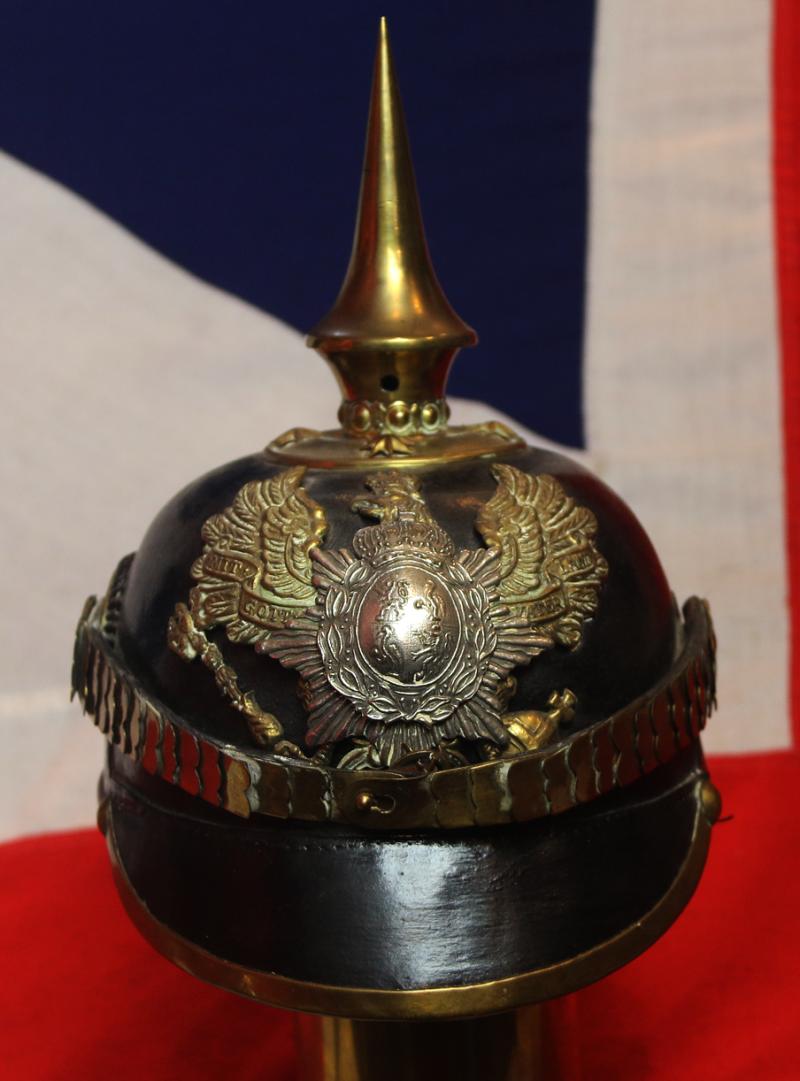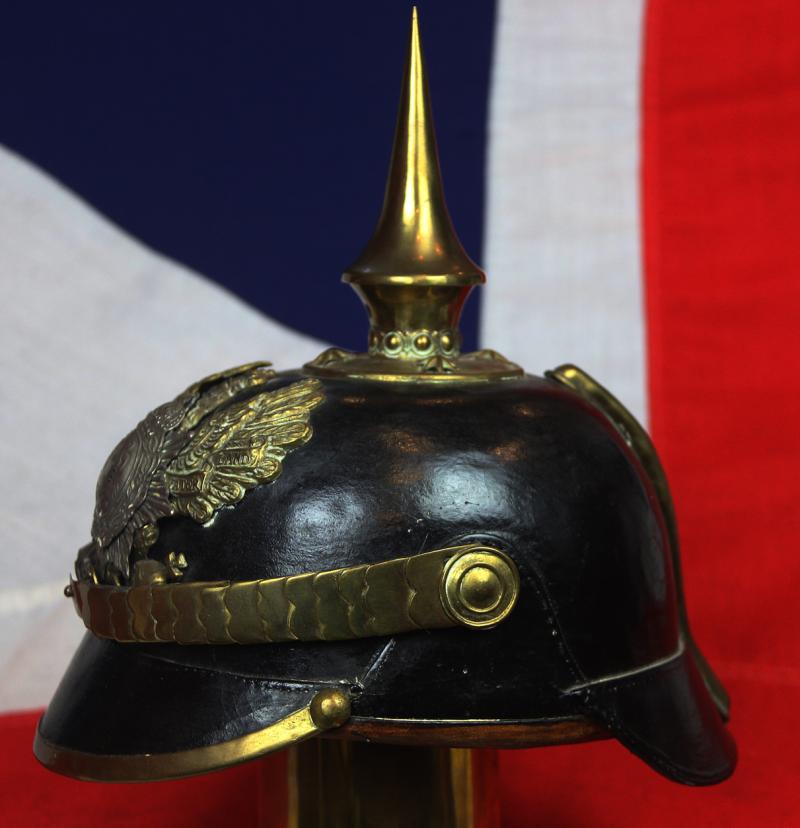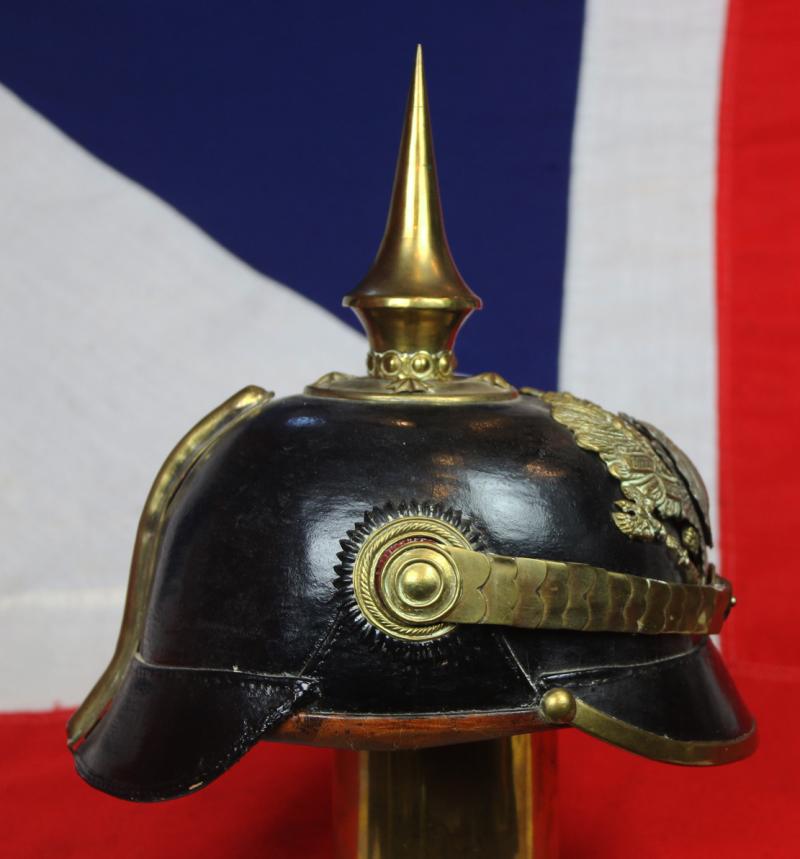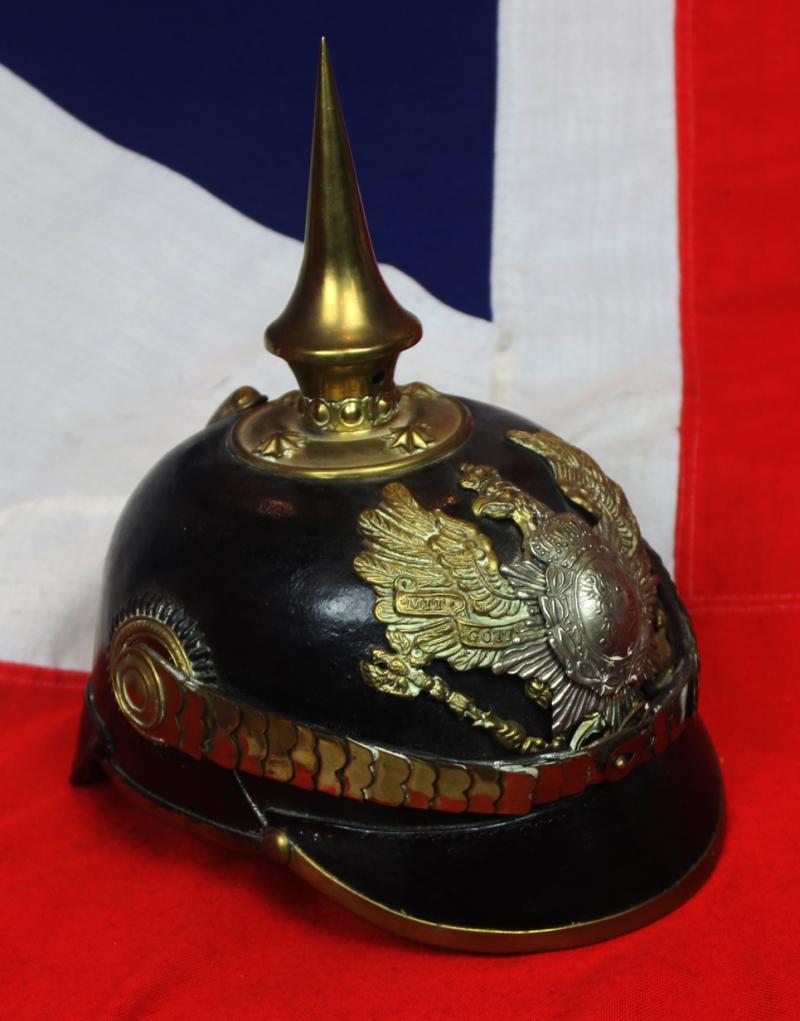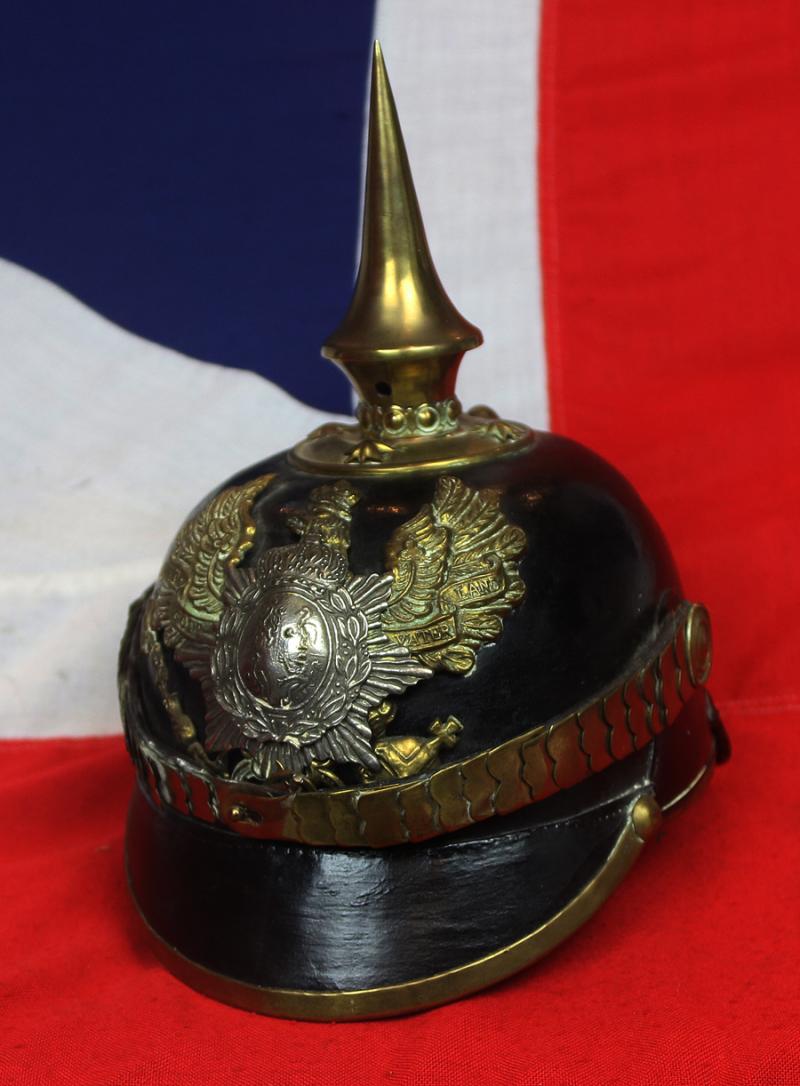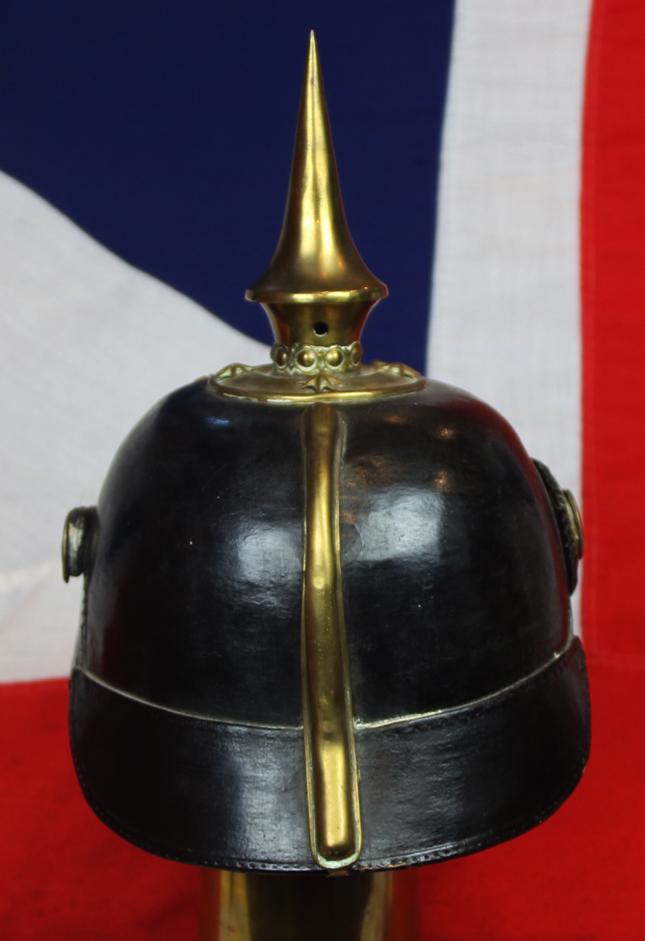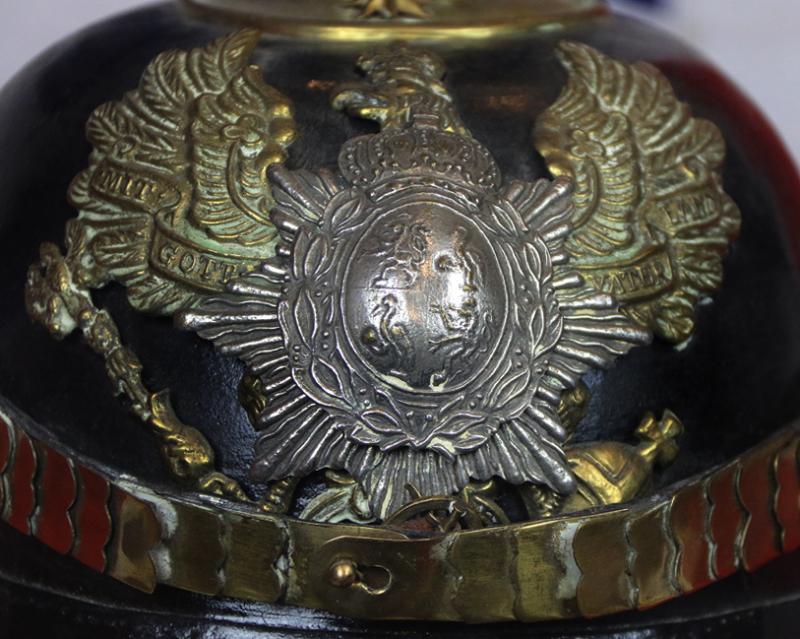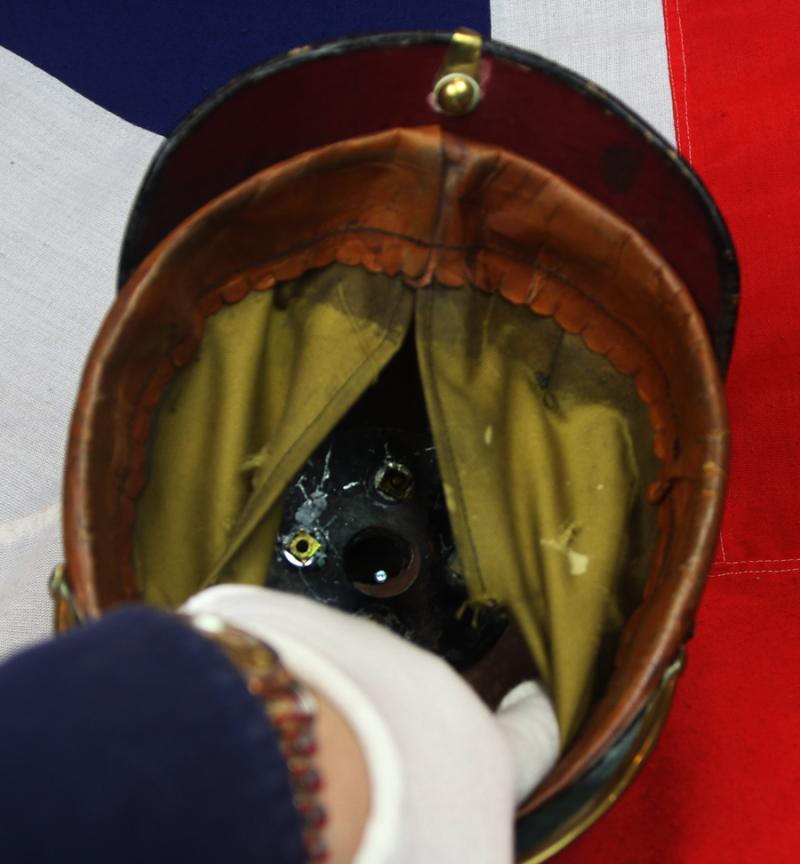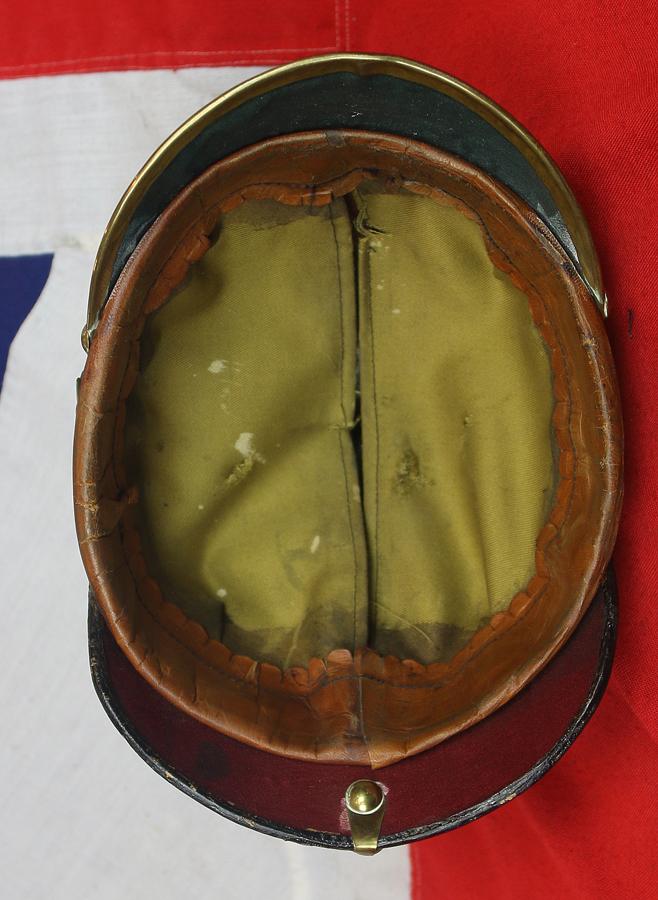A Very Special Offer Item! A WW1 Pickelhaube Pattern of Helmet for Officer's, For An Imperial German Officer of the 7th.Thuringian Infantry Regiment 96, Battalion II, Gera, Reuss.
REUSS Pattern helmet, model 1895, for a senior officer, 2nd Battalion, 96th Infantry Regiment (Principality of Reuss). Varnished shell. Four-star base. Rear and visor bezels, leather-lined scale chinstraps in brass. Large brass plate with Prussian eagle and high-relief silver-plated motif with the Principality's coat of arms. Officer's red and black cockade in the Reich colours. Brown leather and pale brown/green silk inner headpiece liner (wear).
In excellent condition, but believed to be post-war, potentially made for display, and possibly composite, and thus we have priced it accordingly. However, it looks simply amazing, and a superb looking piece. If we could guarantee it wasn't a composite piece and Imperial it could be valued at between £2,000 to £3,000 today. Either way it is a stunning piece for display and or decor. The spike unscrews for combat service, and for a horse hair plume to be fitted for full dress service.
The Pickelhaube was originally designed in 1842 by King Frederick William IV of Prussia, perhaps as a design based on similar helmets that were adopted at the same time by the Russian military. It is not clear whether this was a case of imitation, parallel invention, or if both were based on the earlier Napoleonic cuirassier. The early Russian type (known as "The Helmet of Yaroslav Mudry") was also used by cavalry, which had used the spike as a holder for a horsehair plume in full dress, a practice also followed with some Prussian models.
Frederick William IV introduced the Pickelhaube for use by the majority of Prussian infantry on October 23, 1842 by a royal cabinet order. The use of the Pickelhaube spread rapidly to other German principalities. Oldenburg adopted it by 1849, Baden by 1870, and in 1887, the Kingdom of Bavaria was the last German state to adopt the Pickelhaube (since the Napoleonic Wars, they had had their own design of helmet, called the Raupenhelm.
From the second half of the 19th century onwards, the armies of a number of nations besides Russia, (including Bolivia, Colombia, Chile, Ecuador, Mexico, Portugal, Norway, Sweden and Venezuela,) adopted the Pickelhaube or something very similar.
The Russian version initially had a horsehair plume fitted to the end of the spike, but this was later discarded in some units. The Russian spike was topped with a grenade motif. At the beginning of the Crimean War, such helmets were common among infantry and grenadiers, but soon fell out of place in favour of the fatigue cap. After 1862 the spiked helmet ceased to be generally worn by the Russian Army, although it was retained until 1914 by the Cuirassier regiments of the Imperial Guard and the Gendarmerie. The Russians prolonged the history of the pointed military headgear with their own cloth Budenovka in the early 20th century. All helmets produced for the infantry before and during 1914 were made of leather. As the war progressed, Germany's leather stockpiles dwindled. After extensive imports from South America, particularly Argentina, the German government began producing ersatz Pickelhauben made of other materials. In 1915, some Pickelhauben began to be made from thin sheet steel. However, the German high command needed to produce an even greater number of helmets, leading to the usage of pressurized felt and even paper to construct Pickelhauben.
During the early months of World War I, it was soon discovered that the Pickelhaube did not measure up to the demanding conditions of trench warfare. The leather helmets offered virtually no protection against shell fragments and shrapnel and the conspicuous spike made its wearer a target. These shortcomings, combined with material shortages, led to the introduction of the simplified model 1915 helmet described above, with a detachable spike. In September 1915 it was ordered that the new helmets were to be worn without spikes, when in the front line.
Code: 25175

